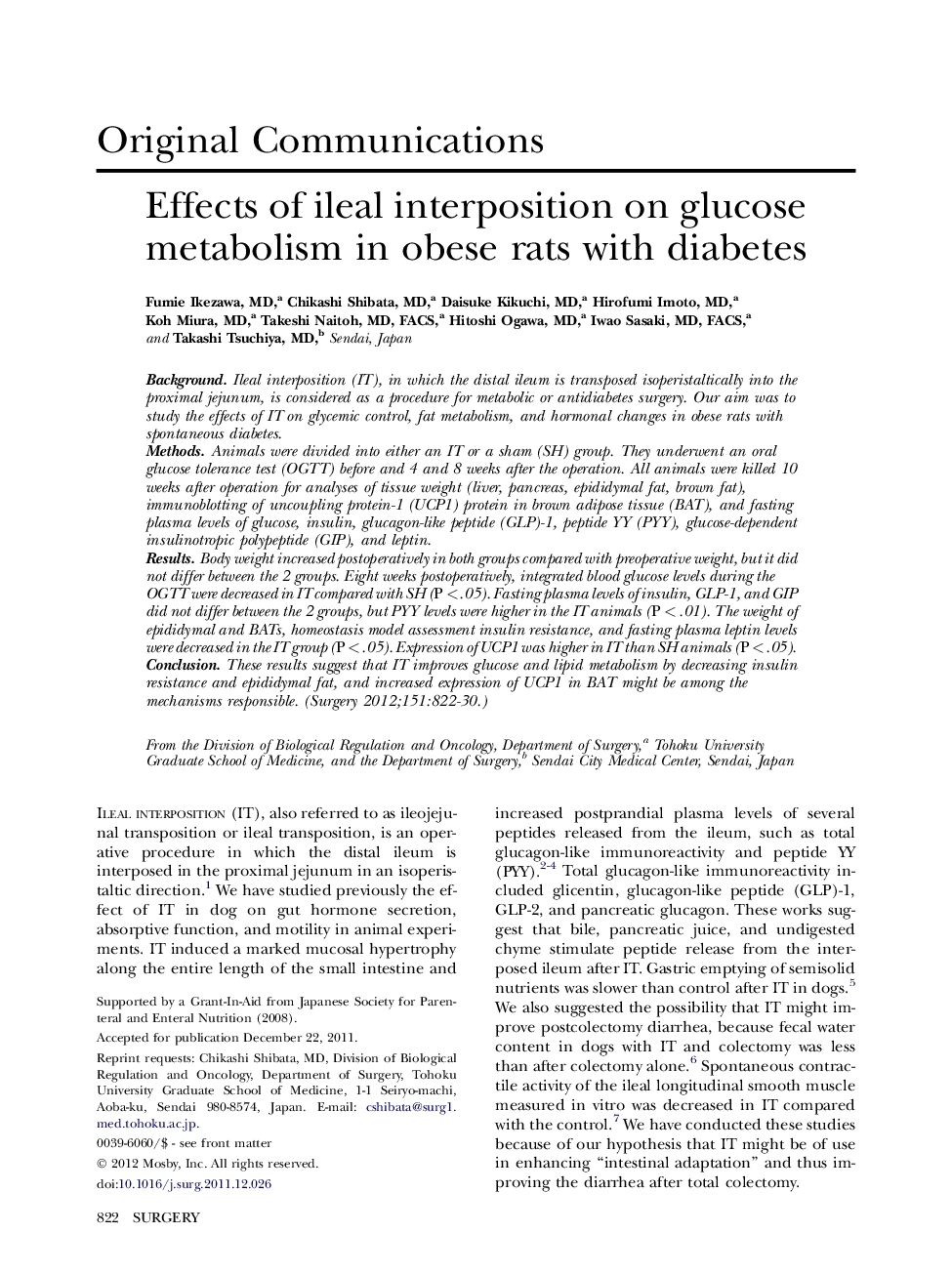| Article ID | Journal | Published Year | Pages | File Type |
|---|---|---|---|---|
| 4307798 | Surgery | 2012 | 9 Pages |
BackgroundIleal interposition (IT), in which the distal ileum is transposed isoperistaltically into the proximal jejunum, is considered as a procedure for metabolic or antidiabetes surgery. Our aim was to study the effects of IT on glycemic control, fat metabolism, and hormonal changes in obese rats with spontaneous diabetes.MethodsAnimals were divided into either an IT or a sham (SH) group. They underwent an oral glucose tolerance test (OGTT) before and 4 and 8 weeks after the operation. All animals were killed 10 weeks after operation for analyses of tissue weight (liver, pancreas, epididymal fat, brown fat), immunoblotting of uncoupling protein-1 (UCP1) protein in brown adipose tissue (BAT), and fasting plasma levels of glucose, insulin, glucagon-like peptide (GLP)-1, peptide YY (PYY), glucose-dependent insulinotropic polypeptide (GIP), and leptin.ResultsBody weight increased postoperatively in both groups compared with preoperative weight, but it did not differ between the 2 groups. Eight weeks postoperatively, integrated blood glucose levels during the OGTT were decreased in IT compared with SH (P < .05). Fasting plasma levels of insulin, GLP-1, and GIP did not differ between the 2 groups, but PYY levels were higher in the IT animals (P < .01). The weight of epididymal and BATs, homeostasis model assessment insulin resistance, and fasting plasma leptin levels were decreased in the IT group (P < .05). Expression of UCP1 was higher in IT than SH animals (P < .05).ConclusionThese results suggest that IT improves glucose and lipid metabolism by decreasing insulin resistance and epididymal fat, and increased expression of UCP1 in BAT might be among the mechanisms responsible.
